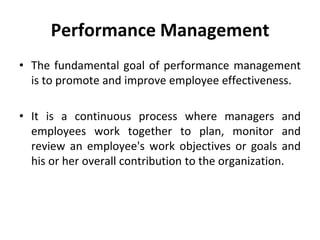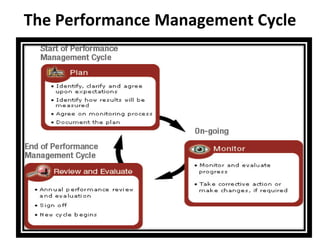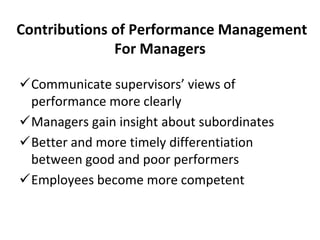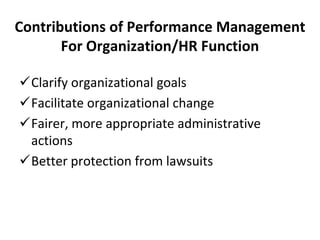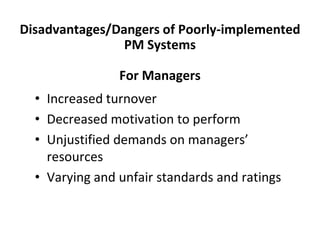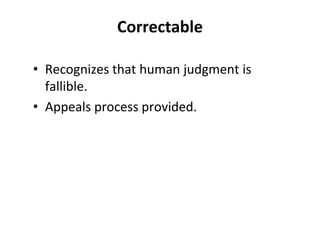The document discusses result orientation and performance management. It defines result orientation as focusing on outcomes rather than processes, and using the most effective processes. Performance management is defined as collaboratively planning, monitoring, and reviewing employee goals and contributions. An effective performance management system has features like setting goals, providing feedback, training, and supporting organizational strategy. It also discusses the performance management cycle and contributions and disadvantages of performance management systems. Finally, it outlines 14 characteristics of an ideal performance management system, such as being congruent with strategy, specific, reliable, and ethical.








